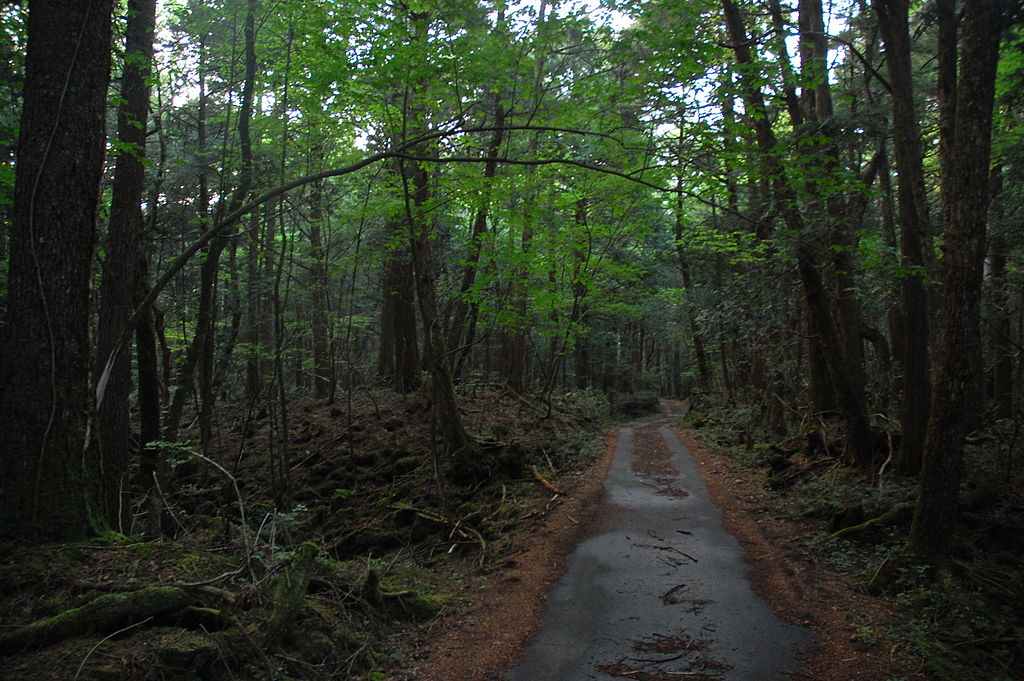“To display the dead, after all, is what the enemy does,” writes Susan Sontag in Regarding the Suffering of Others.
Logan Paul became Public Enemy No. 1 after posting a videolog on YouTube of a dead, hanged body of an unidentified person in Aokigahara forest, a dense thicket on the northwest side of Mt. Fuji, which, as Paul quickly points out, is more sensationally known as “The Japanese Suicide Forest.” (cue dramatic sound effect)
With his tent in hand and sleeping bag dangling from his backpack, Paul self-mockingly bills the adventure as “just a couple of dumb ‘mericans goin’ campin’ in the Suicide Forest.” Just 100 yards into the hike and 43 seconds into the video, he discovers the body of a man who had recently hanged himself.
The Japanese have a phrase “The dead have no mouths” (Shinin ni kuchi nashi) to describe their powerlessness to speak on their own behalf. This is especially true of those who choose to die in this location, rarely leaving behind any note and often desiriring “only a quiet death, only to vanish,” according to Japanese psychiatrist Dr. Takahashi Yoshitomo, who investigated suicides there in the early 1980s. In the face of this self-willed muteness and this desire for invisibility and even self-erasure, our responsibility to see, hear, feel and speak is awesome.
Notwithstanding his removal of the video and apologies following the outcry, nearly everything Paul did was criticized: his choice to show the body, including close-up stills of the discolored hands; his choice to focus on his own reactions; and his choice to upload the vlog — despite pixalating the face and demonetizing the video so no profit could be gained from advertising revenue.
Demonizing Paul has proven remarkably easy. Many of his choices flout the YouTube Community Guidelines (not to mention the WHO suicide prevention “Resource for Media Professionals”), which stresses avoiding “zooming in or sustained focus on the most graphic sections of the video” as well as sensationalist titles that “highlight the most provocative or shocking aspects of your video.” Most importantly, they recommend including informative narration to provide crucial context for any graphic content.
This was not the first cultural production that garnered criticism for misusing the forest. Two Hollywood films were universally panned for falling into the trope of what one critic called “spooky Japanese thing, but with Caucasians to root for,” and Japan has had its share of sensationalist productions that have been critiqued for fueling the attraction of this site as a suicide destination. Several other famous Youtubers have cast themselves as intrepid explorers braving the “haunted” forest in a Blair Witch Project-like style docu-drama, mistaking deer bones for human and claiming to hear, feel, and see ghostly bodies where they were not.
What feels so wrong about many of these representations is the sense that these travelers are looking and showing, but not seeing. But maybe, paradoxically, it is the obtuse otherness of these outside observers that can save these representations after all. Or as Sontag puts it in her book about images depicting suffering, they can force us to think about how “intrinsic to the perpetration of this evil is the shamelessness of photographing it. The pictures were taken as souvenirs…. The display of these pictures makes us spectators too.”
Sontag’s choice of book cover is illuminating in this respect: a hand-drawn Goya print of the profile of a man hanging from a tree, his head slumped, pants pulled down and hands dangling at his side. Beside him, a mustachioed man languidly lounges, gazing squarely and even seductively at the spectacle.
The insertion of an unattractive spectator into an image that depicts human suffering speaks volumes. It offers a check on our baser rubbernecking impulses, on how we look at those who do not, cannot, see or speak for themselves by instead forcing us to look at ourselves looking. This is especially important when considering other cultures, places and times that seem remote and distant from our own.
We’re always outsiders looking in at someone else’s pain. Now, in watching Paul repent, we are witness to his pain too.
Paul framed his vlog with what is perhaps one of the most dubious Trigger warnings of all time: “Now with that said: Buckle the fuck up, because you’re never gonna see a video like this again!”
I hope he’s right. I hope we have just witnessed a cultural shift in our collective community standards for regarding the pain of others. Hopefully none of us ever does “see a video like this again,” if not because videos like this stop being posted, as YouTube promised in its recent open letter apology to the community, then because we learn to look differently at those who suffer and at those who look at them.
Kirsten Cather is a professor of Asian studies at UT Austin. Her current book project, “Scripting Suicide in Modern Japan” considers the representation of suicide in Japanese art and society in the 20th and 21st centuries.
